Last updated on April 14th, 2024
Featured image: Scenic views above Lac Bay, Bonaire | Photo by Jan Wachtmeester for Tourism Bonaire
How women can contribute to thoughtful, transformative travel in Bonaire
by Jules Torti
It’s a natural inclination to seek out destinations and experiences that transform us. But, in doing so, how are we transforming that country? Is our personal transformation reciprocal? There are fewer and fewer roads less traveled and tourist-magnetic places like the Cinque Terre, the Galápagos Islands and Angkor Wat will continue to be coveted for obvious reasons. Whether it’s walking the Camino de Santiago or trekking with gorillas in Uganda, the transformative expectation of travel has an undeniable impact.
In Bonaire, the island’s bold new campaign “It’s in our nature” is evident, everywhere. As a responsible traveler, it should be in our nature too. How can we ensure that while we are not the only ones on the receiving end and benefiting from the surreptitious force of transformative travel? What can we do to contribute to the positive power of change in the countries and communities we visit?
From reef renewal to seagrass restoration projects, Bonaire has been a leader in sustainability. With ballooning tourism and increased cruise ship traffic, Bonaire is now welcoming over 180,000 tourists a year. That’s eight times the island’s population of 22,500!
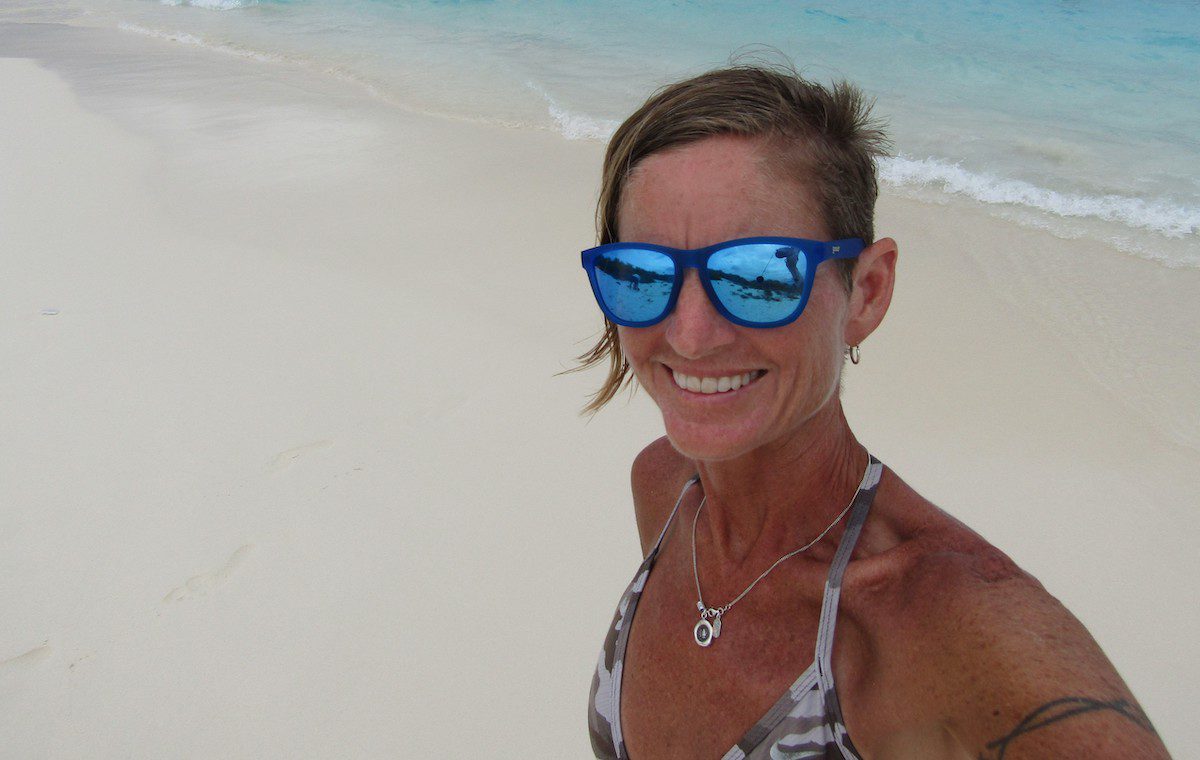
Jules on Klein Beach / Photo by Jules Torti
Where is Bonaire exactly?
Bonaire catches the trade winds 80km (50 miles) north of Venezuela in the teal-streaked expanse of the Caribbean Sea. The famed “ABC Islands” chain of Aruba, Bonaire and Curaçao have an undeniable allure.
Westjet offers direct flights from Toronto to Bonaire. They have partnered with Carbonzero and their site allows you to calculate and purchase carbon offsets (you can also choose which projects you’d like to support from the Canadian and international options). Check flights here.
These westernmost isles of the Leeward Antilles have a tight bowline knot tied to the Netherlands—Aruba and Curaçao are self-governing and autonomous while Bonaire is a special municipality of the Netherlands. This micro geography lesson translates to one very important thing: the prevalence of Gouda!
Wild donkeys and goats roam as free range as chickens, undisturbed by the thorny obstacles and parched land. They are the unofficial grounds maintenance crew at Piedra So, the island’s only golf course.
Underfoot, whiptail lizards with impossibly blue tails skittle about in the company of larger basking green iguanas as happy as house cats in a sunbeam. Lime green streaks of chatty parakeets streak the sky at sundown. Over coffee, brilliant bananaquit birds provide animated entertainment. Yes, it’s a very easy island to ooze into.
Bonaire is an isle of striking juxtapositions, and the first impression is the heavy Dutch influence–from the warm willkómmen (welcome) at the airport to grocery store shelves (insert stroopwafels, salty black licorice and chocolate sprinkles here) to restaurant menus (Heineken on tap, bitterballen and croquettes for apps) to the Dutch paperbacks in the little free libraries. I was a day away from starting a free trial to learn Dutch via the Rosetta Stone.
Whether you love surf or turf, Bonaire delivers. The biscuit-coloured sand beaches of Ti Amo and Sorobon are a nirvana for snorkelers, shore divers and kitesurfers. From the colourful capital city of Krandelijk, the island’s landscape takes dramatic turns from the electric blue sea to the dense candle cacti jungles of Washington Slagbaii National Park. To the south, blinding white salt pans lie in grids surrounded by pastel pink lakes favoured by a flamboyance of flamingos. It makes sense that the landing strip for the island is Flamingo International Airport. In between, saffron and terracotta-roofed houses mix with fearlessly painted kunukus (farm houses) protected by fierce-looking cacti fences.
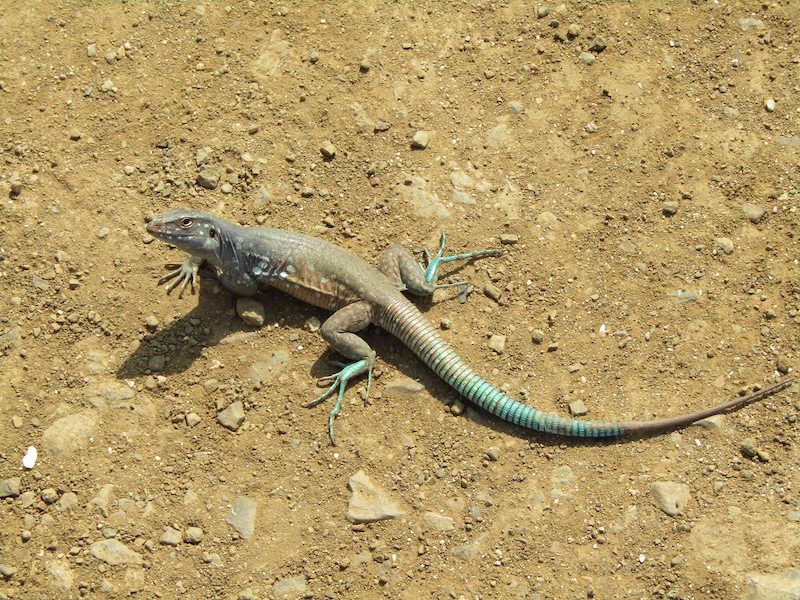
A Whiptail lizard / Photo by Jules Torti

Colourful Bananaquit bird / Photo by Jules Torti

The colourful suites of Courtyard Bonaire Dive Resort line the canal / Photo by Jules Torti
Cactus cocktails and goat bone buttons
Caribbean islands are naturally irresistible to winter-weary North Americans. Collectively, we want suede sand and a big bathtub-warm sea to sink into. We want bougainvillea blooms, tropical birds and a bright plate of pineapple, papaya and watermelon that hasn’t traveled endless miles to our kitchen counter.
However, the infertile and arid landscape of Bonaire means that the island is overwhelmingly reliant on imported goods. The geography lesson continues in supermarkets where buying local is nearly impossible. Pinot noir is imported from Moldova. Kettle chips arrive from Denmark. There are Mexican popsicles in the freezer alongside Norwegian salmon. The monster avocados originate in Florida. Once a week, freckled bananas arrive from neighboring islands and disappear just as fast.
Aside from cans of Surinamese ginger lemonade and food trucks slinging catch-of-the-day marlin or tuna burgers, eating local is a grind. In Bonaire, it comes down to a surplus of salt and cactus and when life hands you lemons, or in this case, cacti, one makes a liqueur! At Cadushy Distillery in Rincon (the only distillery on the island), every inch of the cactus is used in the process. After the spines are removed, the clean “ribs” are fed to donkeys. Other parts not used in the distillation process are dehydrated (by solar power) and ground into a powder for tea and soup. It’s truly a feel-good, cactus-to-cheers shot.
This is an island that has long relied on ingenuity and repurposed items—goat bones were once shipped to Suriname to be made into buttons! At the Phish Phaktory in Wilhelminaplein Market in Krandejilk, the artist’s eco-loving line of custom products are derived from old sails and canvas. Beach bags, baby bibs and dog collars are smartly made from retired kitesurfing fabric and donated materials. From cactus cocktails to low-emission cups of coffee, Bonaire is evolving with the environment at the forefront.
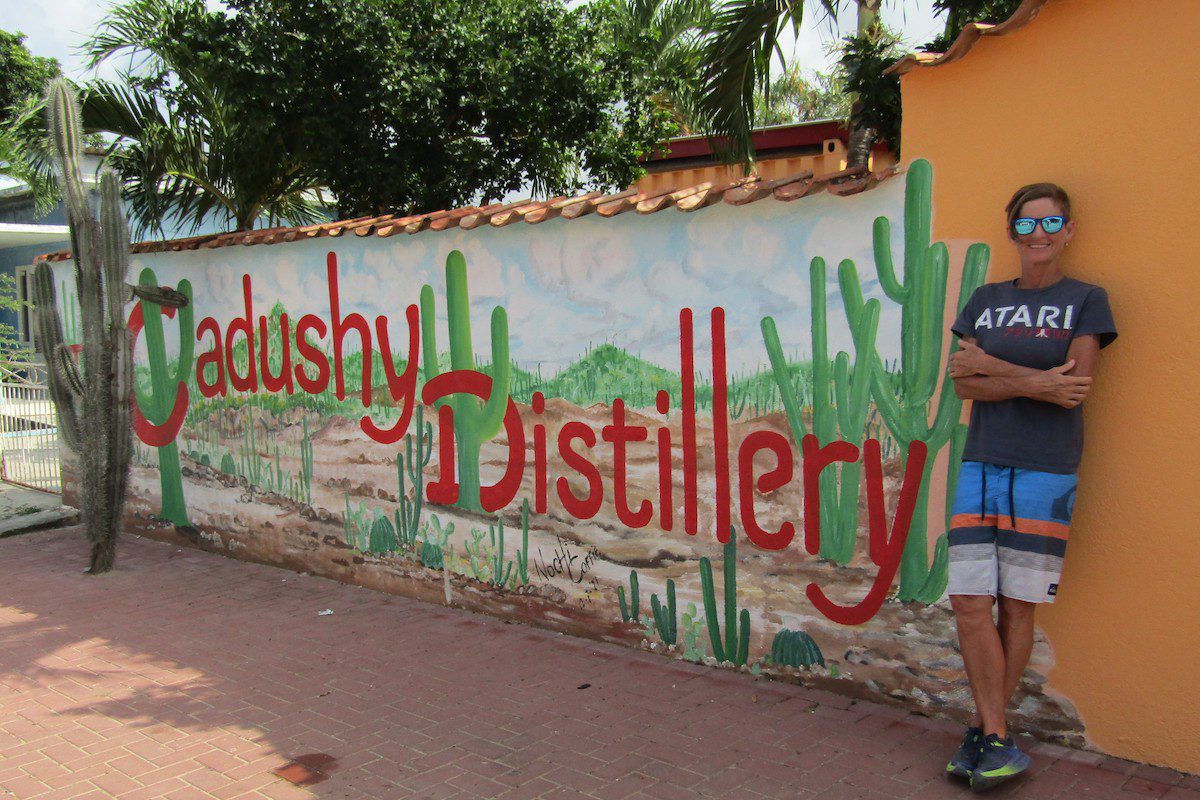
Jules at the Cadushy Distillery in Rincon / Photo by Kim Kenny
Low-emission coffee for your conscience
At Bonchi Boneiru (the first and only coffee roastery in Bonaire), green coffee beans imported from farmers in Central and South America are now roasted on-site, eliminating the emissions of roasting and shipping from Europe. Bonchi produces a chemical-free decaf blend using a mountain water filtration process too—and the Cubulco-washed La Moreno medium roast supports Guatemalan women coffee producers seeking financial security and equality.
Another refreshing discovery is the island’s desalination plant. You can safely drink water straight from the tap reducing the glut of single-use plastic often associated with island travel. Bonaire has been proactive on the plastic front too—as of June 1, 2022, plastic stirrers, straws, bags and cutlery were banned and in August of the same year, Styrofoam takeaway containers were axed too.
Taking a deep dive
Tropical travel demands mindful and thoughtful choices. The island’s shallow Lac Bay region (part of Bonaire’s Marine National Park) is home to a windsurfing school, a wild bird rehabilitation centre, sensitive seagrass beds, mangrove forest, Queen conch habitat and the barrier reef. A zoning map has been introduced to reduce the recreational impact of surface traffic and the damage to native sea grasses below.
Bonaire was the first Caribbean island to protect its surrounding seas, mangroves, seagrass and corals with a marine park designation in 1979. Turtle protection was established even earlier, in 1961, and a prohibition of spearfishing was cemented in 1971. Corals (dead and alive) have been protected since 1975 and the world’s first mooring systems for boats (to prevent damage from carelessly dropped anchors) happened in little Bonaire over three decades ago. In 1984, the Hilma Hooker ship was sunk to create an artificial reef–the site has also been used to study the effects of storm damage and hard coral recovery. The highly invasive Stony Coral Tissue Loss Disease (SCTLD) has recently been identified in Bonaire’s coral colonies. First reported off the coast of Florida in 2014, SCTLD has spread to 22 different countries and territories in the Caribbean. As a precaution, Bonaire’s Washington Slagbaai Park remains closed for diving.
Bonaire has 86 dive sites with playful names like Just a Nice Dive, Hands Off, Front Porch and Something Special. The Bari reef is a rainbow of over 300 species, making it the most biodiverse in the Caribbean. Below the surface, the diving community is increasingly dedicated to the health of the ocean and active in recovering lost fishing line. The line is being reused to tie orphan tube sponges onto pier pilings to establish sponge gardens. In a newer project below the pier of Karel’s Beach Bar, the sponge garden has successfully attracted queen angelfish and cowrie snails. No one is fishing for compliments, but this project is a brilliant solution to untangle the issue of marine litter.
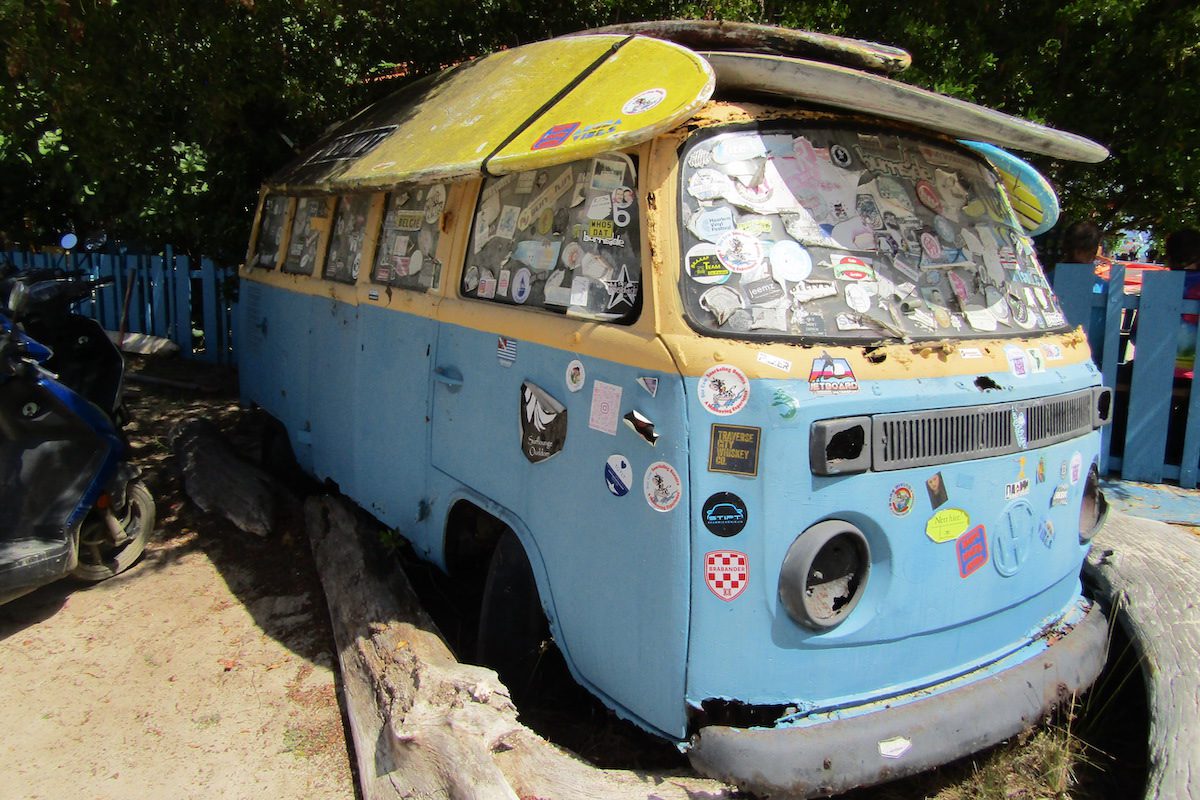
Vintage VW van / Photo by Jules Torti
Park it in Washington Slagbaai National Park
To explore this precious park, visitors must pay a $40 USD Nature Fee (this one-time annual fee is also imposed if you choose to visit Klein Island, dive or snorkel anywhere on the island). The fee supports research, nature education, awareness campaigns, ranger patrol and park maintenance.
After the death of a plantation owner named “Boy” Herrera in 1969, two former land plantations (Washington and Slagbaai) supplying salt, charcoal, aloe, divi divi pods and goats to neighbouring Curaçao and Europe, formed the new 14,000-acre national park. From the freshwater lagoons populated by tropical mockingbirds and brown-crested flycatchers to the fossilized coral reef shelves heaved up by tectonic plate action, the park is full of supernatural contrasts. The ghostly remains of the 19th century never-lit Malmok lighthouse occupy the turbulent northern point while the gin-clear waters of Wayaka reveal brilliant flashes of Midnight parrotfish and French Angels from a standing position.
Only 4×4 vehicles are allowed into the park as the safari-like rutted roads and potholes are designed to swallow up compact cars. Here, bats spread pollen from night-blooming cacti. All four species of Caribbean sea turtles nest on the park’s powdered sugar sand beaches. Yellow-shouldered Amazon parrots breeze by—they are the only surviving population outside of Venezuela found in Bonaire.
At the nearby Echo Sanctuary in Dos Pas Valley, this bird’s daunting recovery from the international pet parrot trade and poaching is shared in private tours. If you’re looking for a two-fold transformative experience, the sanctuary is always seeking volunteers for parrot husbandry, nest monitoring and roost counts throughout the year.
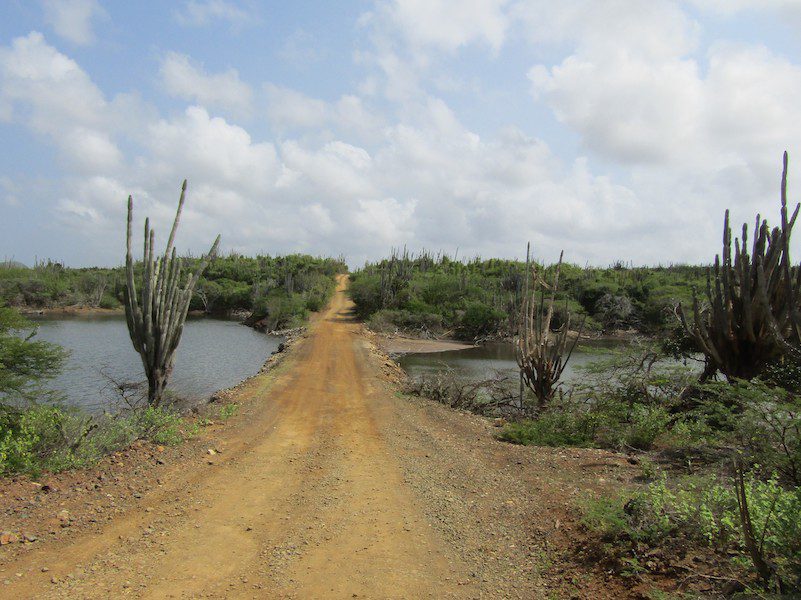
Exploring Washington Slagbaai National Park / Photo by Jules Torti

Cacti in Washington Slagbaai National Park / Photo by Jules Torti
Walking the balance beam with flamingos
A tourism recovery plan has recently been introduced with a needle focus on community involvement so residents may also benefit from tourism dollars too. Tourism Corporation Bonaire has encouraged the organization of Bario festivals in the six main neighborhoods of Antriol, Nikiboko, Nort’i Saliña, Playa, Rincon and Tera Kòra. The community fests include pop-ups, art displays and farmers’ markets with bus service from island hotels for tourists. Establishing a symbiotic, reciprocal relationship between visitors and locals is just as vital to the island’s transformation as the survival of endemic species, wild donkeys and breeding Caribbean flamingos.
At Cargill’s solar salt production facility (which covers 13% of the island on the southern tip), there’s a commitment to protecting the centuries-old salt industry and flamingo breeding. Salt harvesting and the largest pink flamingo sanctuary in North America share delicate space. The flamingos depend on the shrimp and algae of the salt ponds and co-exist in harmony with Cargill’s industrial production in the Pekelmeer Flamingo Sanctuary—one of just four areas in the world where flamingos breed.
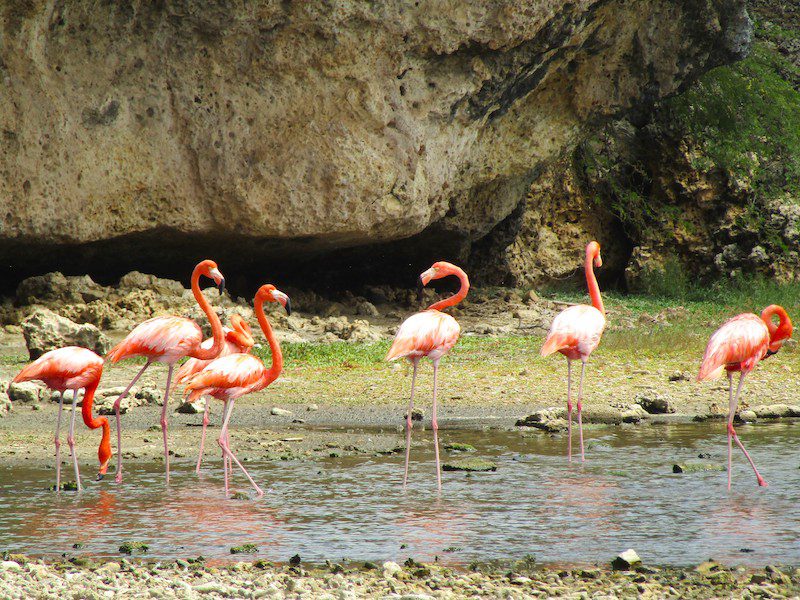
A flock of Caribbean flamingos / Photo by Jules Torti
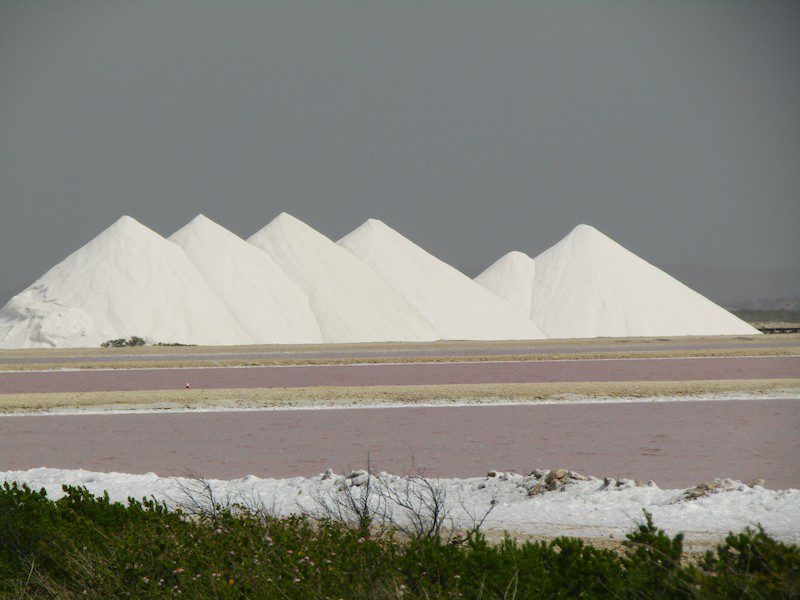
Cargill’s solar salt production facility / Photo by Jules Torti
More ideas for contributing to a positive transformation in Bonaire
There are so many opportunities for a low-impact, two-fold transformative experience in Bonaire. From participating in monthly beach clean-ups to walking dogs at the Animal Shelter or simply ordering a lionfish burger, you can travel to this island and leave a positive footprint. There’s nothing quite like falling to sleep to the sound of braying donkeys being carried on the breeze. It’s a birder’s Eden and a deep lesson in upcycling, innovation and the harmony that can exist in human-animal relationships.
Learning more about coral reef restoration, invasive species, the international parrot trade and island food security magnifies the power of thoughtful travel. As Bonaire boasts, “It’s in our nature.” I want it to be in my nature too. It’s a good transformation.
1. Visit the Donkey Sanctuary Bonaire
The Donkey Sanctuary Bonaire is always seeking volunteers and interns to assist with their ambitious care of more than 800 donkeys. A visit to the sanctuary is highly interactive (expect some enthusiastic slobber) as many of the curious and sentient donkeys are eager to engage and lean into a scratch (or for a handful of pellets). The wild donkey population outside the sanctuary is thriving–more than 1,200 donkeys live on the island, but they are often victims of traffic accidents and find care and rehabilitation at the sanctuary. Descendants of donkeys originally introduced by Spaniards in the 17th century for labour, the donkeys’ role was replaced by modern equipment. Many were released into the wild to fend for themselves. You can adopt a donkey at the sanctuary—all profits are dedicated to the donkeys for their ongoing medical care, wellbeing and food. A visit to the Special Care Unit where orphaned foals are bottle-fed is unforgettable, as is time spent in the Seniors Meadow with the aging donkeys who love to be groomed.
2. Support local food trucks like Cactus Blue on Donkey Beach
This is the only place on the island where you’ll find lionfish burgers on the menu–and it’s run by a woman! The lionfish is invasive and its presence alters the natural ecosystem and creates competition for native fish. They have few predators and can quickly decimate areas of smaller fish and crustaceans. The Cactus Blue grilled lionfish burger is served with jalapenos, onions, bacon and cheese with a honey mustard dressing. It’s an unusual but delicious way to pitch in!
3. Volunteer or donate items to Animal Shelter Bonaire
The shelter is constantly seeking extra hands to help out in their secondhand shop Pakus di Pruga (flea market). They have a wishlist for items like cat toys, dog collars and leashes which are easy to squeeze into a carry-on! If you are handy or a gardener, there’s a to-do list for you too.
4. Rent a bike or travel by foot
Unfortunately, Bonaire doesn’t have a public transit system. Yet! Until then, several island companies rent mountain bikes, scooters, e-bikes and even electric fat bikes. Golf carts are also an option. At EcoWheels, the only electric car rental on Bonaire, choose from an entire fleet of electric options from electric economy to mid-size crossovers to e-scooters and e-fatbikes.
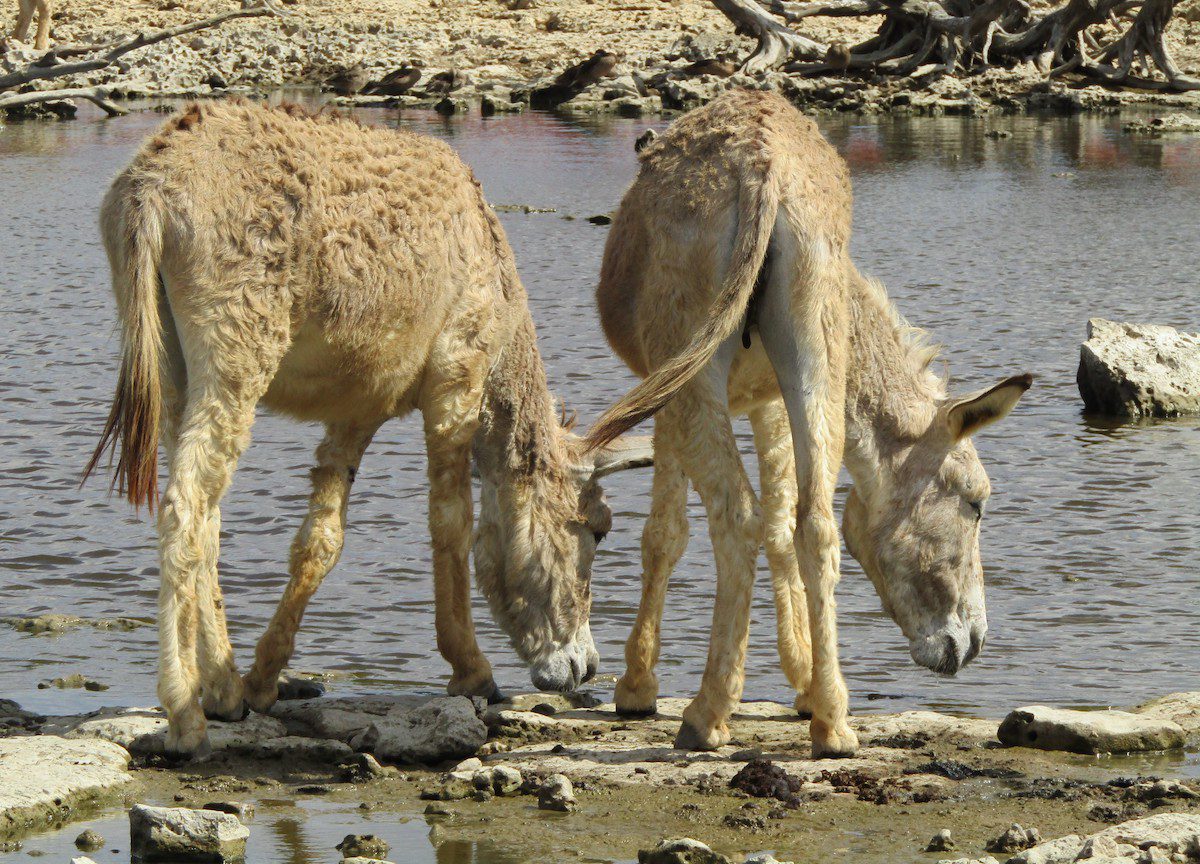
Volunteer with The Donkey Sanctuary Bonaire / Photo by Jules Torti
Where to stay in Bonaire
We rented a one-bedroom apartment at the Bloozz Resort, directly across from Bachelor Beach. They have an on-site PADI dive school and magnapool—the water quality is controlled by magnesium instead of chlorine which is both healing, chemical-free and enviro friendly.
For the latter part of our stay, it was an Airbnb condo rental at Resort Bonaire. Both included fully kitted-out kitchens and balconies.
From our prowls around the island, I’d also recommend Puur Bonaire Boetiek or Sorobon Luxury Beach Resort (there’s a windsurfing school directly beside it) or for something urban and central, The Art Hotel in Kralendijk.
More Stories From The Caribbean
More Than Breathtaking Beaches: Adventures For Women in Martinique
Come for Martinique’s beaches but stay for eco-friendly adventures like hiking in lush rainforests, birdwatching and kayaking.
JourneyWoman Webinar: Less-Travelled Caribbean & Mexico on September 24
Join our September 24 webinar to learn about the Caribbean and Mexico from experts in our JourneyWoman Women’s Travel Directory.
Discovering French Martinique: The Caribbean’s Best-Kept Secret for Solo Women
In Martinique, tropical landscapes meet adventure on the ‘Land of Flowers’, making it more than just the typical Caribbean getaway.




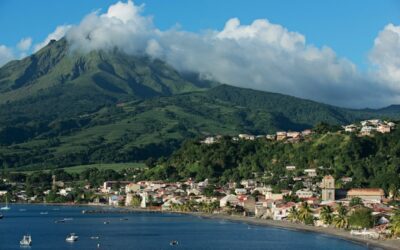
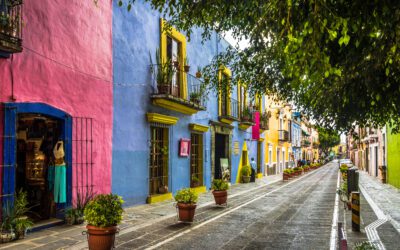

This article is informative, well-written and entertaining. Great job Jules! It was like we were sitting, talking to one another by the pool in Bonaire
By way of background, I was in Bonaire in February 2024. Bonaire is, in my judgement, what Aruba was like about 40 years ago. I have been to Aruba many times and Curacao a few times, all of these stay-put vacations. In Bonaire, I stayed at the well appointed and spread out Delfin’s Beach Resort. A Dutch-owned/run resort.
Also by way of background, I am a 71 year old widower (Yes, I’m a guy) and try as might in previous years, I could not persuade my beloved wife to go to Bonaire. She loved the glitz and glamour of Aruba, which has almost become a victim of its own success.
An item worth mentioning is the WestJet schedule. The flight from Toronto to Bonaire is almost 5 hours, (Standard duration for flights to the ABC’s) and the plane stays in Bonaire overnight. The return flight to Toronto left Bonaire at 9:00am on the Wednesday morning, getting into Toronto around 1:00pm. The Terminal 3 Immigration and Customs hall was almost empty. Lots of available passport scanners available and unhurried, un-hassled staff to help.
I had plenty of time to catch my connecting flight home to Winnipeg. No overnight hotel and associated expense needed.
If this organization has any influence with WestJet, please ask them to keep the same flight schedule to Bonaire next winter and to keep Delfin’s Beach Resort as part of their program.
Hi Glenn! Thanks for taking a moment to revisit the brilliant Bonaire sun via the virtual poolside (and thank you for your kind, glowing words). Delfins Beach Resort and that exceptionally curated Senang Restaurant were stunning! I’ve insisted that my sister stays there next winter. You picked a grand resort to stay-put and I’m sure your wife was at your side (probably making comparisons to Aruba!). Your impression is shared—the glitz and glamour attracts some and repels others and this is exactly why Bonaire attracted us. We’ve been to Curacao as well and appreciated certain elements of the island but found Bonaire to be an experience of more striking juxtapositions and natural niches. Kim and I had been looking long and hard at Guadeloupe but the direct WestJet flight was a tempting dangling carrot for us as well (especially flying in and out of Toronto!).
I’m just curious, what led you to this JourneyWoman article on Bonaire? If we are on the same beach page (and I think we are after this conversation) I’d suggest Holetown, Barbados or the Dutch-side of St. Maarten for future whisk-aways!
Good evening Jules. Glenn here.
First, my apologies for being late in replying to your comment about my comments. Thank you for your very kind words about my beloved wife. I could just hear her as soon as they opened the aircraft door, ‘Stairs? I have to use stairs?’ and that would be just the start.
Your write-up about Bonaire was sent to my travel agent’s (yes, I still use one) company, Great Canadian Travel Company here in Winnipeg; I imagine as part of their subscription to Journey Women. She sent it on to me seeing that I had been there back in February.
Great news! WestJet is offering Bonaire again this coming winter with the same convenient schedule. I hope Delfin’s Resort is included in their program.
I do have a dining question about your Bonaire trip. Did you find Dutch pancakes (Pannekoeken) anywhere when you were there?
I have made it an ambition of mine to visit all six of the Dutch islands in the Caribbean in the coming years. Your suggestion of Sint Maarten sounds great, recognizing of course that the best restaurants are in French St. Martin.
That’s impressive service from your travel agent! I love that they continue to loop you in after your travels! When you book your next Bonaire stay be sure to thank Great Canadian Travel Company for me on behalf of JourneyWoman. I love how far blog posts can travel by this simple extension.
As for your pancake query—I am a once-a-year pancake gal (I prefer the maple syrup more!). I took a poke around and El Mundo appears most often in tripadvisor reviews. They do the traditional style (as big as a car tire!) and there’s one with bacon and apple! I can’t attach images here but I did have them in Amsterdam years ago and the serving is truly one massive pancake vs. a stack.
I like your Dutch islands ambition—Sint Maarten is so walkable and edible as well! I wish I ate more SXM burgers while we there. Check out Johney Burger—they have a food truck right outside the airport terminal as well, for one last fix! https://www.wearesxm.com/restaurants/johney-burger/
Thank you Jules for your kind words.
Great news! WestJet is once again featuring Bonaire as part of their winter program, with the same flight schedule as this past winter, with the Toronto-Bonaire flight on Tuesdays and the return Bonaire-Toronto flight on Wednesday morning. Of course flight schedules are always subject to change. I will be booking Bonaire for February 2025 very soon.
Hi Glen! Thanks for the update. This flight schedule is so civilized! Another huge perk is that you can walk to your hotel from the airport (if you don’t mind dodging the whiptail lizards along the roadside…and don’t get distracted by Ti Amo beach or the lionfish burger food truck en route!).